Brian Meert's Blog, page 108
September 4, 2018
New Personalized Pandora Ads Give Listeners Unique Audio Experiences
 September 4, 2018
September 4, 2018Anna Hubbel
AdvertiseMint, Facebook ad agency

Mark Cruz / Unsplash
Pandora is recognizing the importance of personalization in advertising. Tech Crunch reported this week that Pandora is introducing shorter, more personalized audio ads to deliver unique experiences to its diverse listener base. Additionally, advertisers will be able to sequentially target ads as part of a bigger, cohesive strategy and create shorter ads with lengths of 4 to 10 seconds.
These new personalized audio ads can include the day of the week and the call-to-actions linked to the location of each listener, Tech Crunch reports. Advertisers can also deliver ads in a sequential manner, sharing a larger version of their message at first then progressing with shorter spots to supplement the main message.
“We believe that an advertiser’s personalized audio strategy will not only be unique to that advertiser but also unique to each campaign,” Claire Fanning, Pandora’s vice president of ad strategy, told Tech Crunch. “In some cases, leveraging one capability may be best (short form, dynamic, sequential), and in other cases, leveraging two or three may be most powerful. It’s really dependent on the advertiser’s creative strategy and which solution, or solutions, will support that strategy best.”
Pandora asserts that it is the first music company to release these capabilities in large scale. It has had 20 advertisers testing the features. Among those advertisers represented Lay’s, which produced short-form audio ads that generated 56 percent higher return on ad spend.
Pandora introduced its own on-demand music service last year, but it still relies on ad revenue to offer its service to music lovers. The more effective the ad options, the more sustained the company.
With all the controversy Facebook is facing surrounding privacy, the public may negatively react to the personalized ads, but according to Tech Crunch, Pandora ads do not allow advertisers to collect private user data beyond email addresses.
“We use industry-standard security practices to protect our data and have developed internal tools and processes to ensure compliance with our privacy commitment,” Fanning told Tech Crunch. “We’ll continue to fortify this by tightening certain contractual language, auditing existing third-party data partners, and evaluating future partnerships with enhanced rigor.”
Written by Anna Hubbel, staff writer at AdvertiseMint, Facebook ad agency
The post New Personalized Pandora Ads Give Listeners Unique Audio Experiences appeared first on AdvertiseMint.
What “Skip Ad” Option? Now Anyone Can Use YouTube’s Non-Skippable Ads
 September 4, 2018
September 4, 2018Anna Hubbel
AdvertiseMint, company for Facebook ads

You don’t want to skip this post. YouTube recently announced that all content creators monetizing their channels can soon run non-skippable ads, resulting in video content with fewer ad skipping options. YouTube announced the change in a video by its Creator Insider channel.
Previously, only a select number of YouTube creators had access to the non-skippable ad option. Now, all content creators who earn money through their videos can also use the non-skippable ads.
According to the video announcement, YouTube is rolling out the non-skippable ad option to all video creators so they can earn more from ads. Advertisers already pay more for non-skippable ads because viewers will watch the ad from start to finish. As a result, video creators earn more money from the advertisers.
What to Expect
According to Mashable, with this latest update, videos with skippable ads will automatically default to non-skippable. However, video creators can still manually change the setting back to skippable.
Although more non-skippable ads may be good news to advertisers (they no longer have to cram as much of their message into the first few seconds of the ads to have any impact), it may not be such a hit with YouTube viewers. If unwilling to watch the entirety of a non-skippable ad, viewers may leave the video, leading to a loss of revenue for the advertiser and the content creator. Nonetheless, YouTube advertising still offers many potential benefits, including
Real-time insights about views
The ability to show an ad before a viral video
Creative freedom for a video ad
Various ad format options
The ability to identify purchase intent
Increased ad exposure through social media sharing
Various audience targeting options
All video creators should see non-skippable ads this week.
Written by Anna Hubbel, staff writer at AdvertiseMint, company for Facebook ads
The post What “Skip Ad” Option? Now Anyone Can Use YouTube’s Non-Skippable Ads appeared first on AdvertiseMint.
Facebook Banned the myPersonality App for Misuse
 September 4, 2018
September 4, 2018Anna Hubbel
AdvertiseMint, Facebook ads company

Facebook announced that it banned the myPersonality app “for failing to agree to [Facebook’s] request to audit and because it’s clear that they shared information with researchers, as well as companies with only limited protections in place.”
Facebook’s investigation into the app revealed that myPersonality misused the information of about four million users. Facebook says it will notify each potentially affected user. However, if the app could not access the information of any of the affected users’ friends, and if Facebook has no evidence that the app accessed those friends’ information, Facebook will not notify the friends of the affected users.
“Should that change, we will notify them,” Facebook says.
On March 2018, Facebook started an investigation of all apps used after learning that the data firm Cambridge Analytica harvested data from 87 million users. The firm bought the information from academic Aleksandr Kogan who acquired the data through his app, thisisyourdigitallife. Cambridge used the information to send campaign messages to users during the 2016 US presidential election to sway people’s votes. After the discovery, Facebook notified users whether their information had been affected by the breach.
Since the investigation began, Facebook has suspended more than 400 apps that presented potential misuse. Additionally, Facebook has made many policy and tool changes. For example, the company recently revamped its App Review process and gave users better control over the apps that have access to their data.
“We will continue to investigate apps and make the changes needed to our platform to ensure that we are doing all we can to protect people’s information,” the update concludes.
Written by Anna Hubbel, staff writer at AdvertiseMint, Facebook ads company
The post Facebook Banned the myPersonality App for Misuse appeared first on AdvertiseMint.
August 30, 2018
Instagram Finally Allows All Users to Request Verification. Here’s How
 August 30, 2018
August 30, 2018Anna Hubbel

The time businesses and influencers everywhere have been waiting for has finally arrived! Mashable recently reported that Instagram is now allowing users to request the blue verification badge.
Instagram’s blue verification check mark, previously only available to public figures with large followings, appears next to the approved user’s profile, indicating that the profile is authentic. Instagram created the verification badge to differentiate copycat accounts from the authentic accounts by public figures, celebrities, famous brands, and other household names.
Until now, it was unclear how to attain such a badge of honor. It was especially frustrating for growing influencers and businesses who felt that they earned the right to be verified. According to Mashable, Instagram first tested the new verification accessibility in Australia back in July.
How to Request Verification
To officially request verification, users can access the verification option in the settings tab of their Instagram profiles. When users select it, they will be prompted to submit a form, which requires uploading a photo of an ID card.
Step 1: Log into your account and navigate to your profile settings.
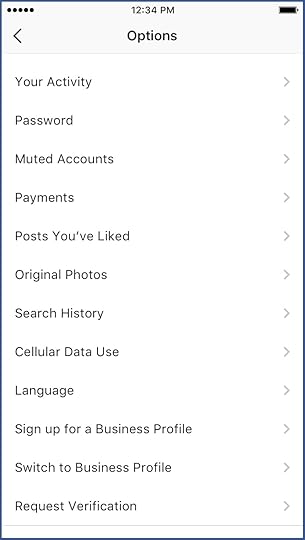
Step 2: Select “Request Verification.”
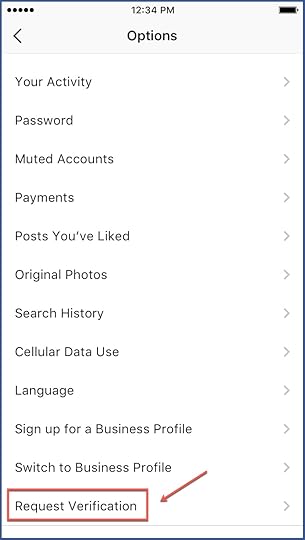
Step 3: In the specified fields, enter your full name and upload a photo of the appropriate form of ID.
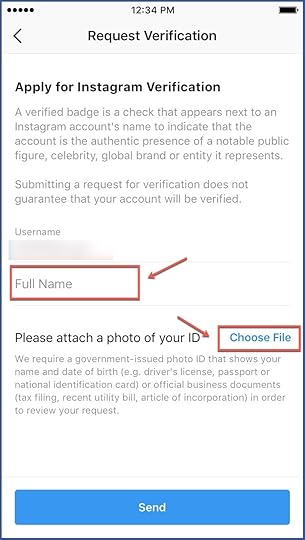
Step 4: Select “Send.”
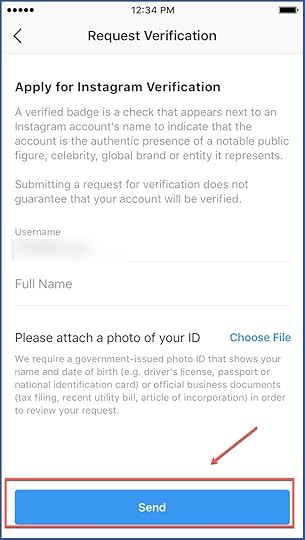
Once Instagram reviews the request, it will send a notification to the user about whether it approved or denied the request. Keep in mind that although Instagram is rolling out the verification process to everyone, it doesn’t mean anyone can receive the coveted blue badge. Only well-known public figures, celebrities, and global brands and entities will be considered.
Although Instagram hasn’t released details about the criteria it uses to determine whether a user receives verification, the number of followers is a major factor. Profiles with large followings will be taken the most seriously. Keep in mind the verification badge exists to prevent copycat accounts from claiming to be the authentic account of a public figure, celebrity, or famous brand.
In addition to the expansion of the verification badge, Instagram recently announced two other security features. One allows users to see information like date joined, country, past usernames, accounts with shared followers, and ads the account is running for all accounts with large audiences. The other provides support for third-party apps like Google Authenticator and DUO Mobile.
It’s a great day to be an influencer!
Written by Anna Hubbel, staff writer at AdvertiseMint, Facebook advertising company
The post Instagram Finally Allows All Users to Request Verification. Here’s How appeared first on AdvertiseMint.
August 29, 2018
Facebook Is Testing an Ad Archive API for Publishers and Researchers
 August 29, 2018
August 29, 2018Anna Hubbel
@Facebook Is Testing an Ad Archive API for Publishers and Researchers. #facebook #facebookads
Click To Tweet

Rawpixel / Unsplash
Facebook announced that it is testing an Ad Archive API with a group of US publishers and researchers. The new API helps publishers and journalists analyze and investigate political or social issue ads shared on Facebook.
In its announcement, Facebook says the new API is part of the platform’s efforts to improve transparency and reduce misuse, “especially during elections.” The company has been publicly ridiculed for inadvertently allowing Russian troll accounts to distribute politically divisive ads during the 2016 US Presidential Election. Facebook has since taken extensive action to prevent such activity from occurring again. Specifically, Facebook has been increasing transparency for all ads and pages. The new Ad Archive API is another measure the company is taking to prevent misuse of its platform.
Facebook is introducing the API to a group of publishers, academics, and researchers to receive feedback on what’s useful and what needs improvement before expanding its accessibility.
“Input from this group will also form the basis of an Archive report that will be available starting in September,” the announcement said.
Facebook says publishers and researchers will be able to use the API to access information about ad creative, the ad’s start and end dates, audience demographics reached, and performance data, such as total ad spend and impressions.
“We’re greatly encouraged by trends and insights that watchdog groups, publishers, and academics have unearthed since the archive launched in May,” the announcement concludes. “We believe this deeper analysis will increase accountability for both Facebook and advertisers.”
To access the API after Facebook concludes the initial test, Facebook says interested parties need to submit an Ad Archive API request form. However, Facebook will not respond until after the test is complete.
The post Facebook Is Testing an Ad Archive API for Publishers and Researchers appeared first on AdvertiseMint.
The Complete Guide to LinkedIn Ad Targeting
Ad targeting on LinkedIn is tough. You want to be as detailed as possible to target customers most likely to respond to your ad—but you can’t do that if you don’t know all of the ad targeting options LinkedIn offers.
If you’re a LinkedIn advertiser, you’re going to want this free resource. Our agency has been using the Complete Guide to LinkedIn Ad Targeting as an internal resource for years, and since it has worked so well for us, we wanted to make it available to you so you can improve your LinkedIn ad campaigns.
This guide is available in a high-res infographic. We hope you find it valuable.

The post The Complete Guide to LinkedIn Ad Targeting appeared first on AdvertiseMint.
August 28, 2018
New Facebook Pixel Shows How Your Group Page Drives Website Activity
 August 28, 2018
August 28, 2018Anna Hubbel
New Facebook Pixel Shows How Your Group Page Drives Website Activity. #facebook #facebookads #digitaladvertising
Click To Tweet

Facebook groups are an excellent way to build an online community and generate interest and conversation around your business. Now, you can measure the effectiveness of your Facebook group. Similar to the Facebook Pixel that tracks website traffic generated from your ads, you can now use the tracking code to measure how your group posts drive action to your website.
How It Works
Using the pixel to see how your Facebook group drives website behaviors, place the pixel base code and relevant events on the backend of your website. Then, Facebook will show you whether a post you shared in the group generates leads or website purchases.
You can see events caused by group posts that are tracked by the pixel through the Group Insights tab in the left-hand menu of your group page. There, you’ll see all of your group events and breakdowns of each event’s results. For example, you’ll see the number of website events resulting from your group posts, growth details, post engagement details, and the people who contribute the most to your group page.

Image Courtesy of Facebook
Note that the aforementioned breakdown is only available through the Groups Insights tab. It is not viewable in Events Manager or Ads Manager since the results are not related to any paid ads. Additionally, only groups with more than 50 members have access to the Groups Insights tab.
Written by Anna Hubbel, staff writer at AdvertiseMint, company for Facebook ads
The post New Facebook Pixel Shows How Your Group Page Drives Website Activity appeared first on AdvertiseMint.
5 Things You Need to Do to Thrive in E-commerce
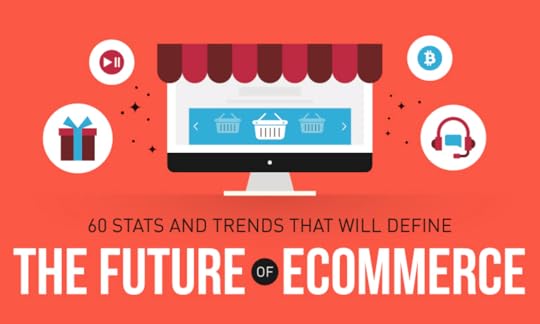 August 28, 2018
August 28, 2018Josh Wardini
5 Things You Need to Do to Thrive in E-commerce. #ecommerce #business #advertising
Click To Tweet
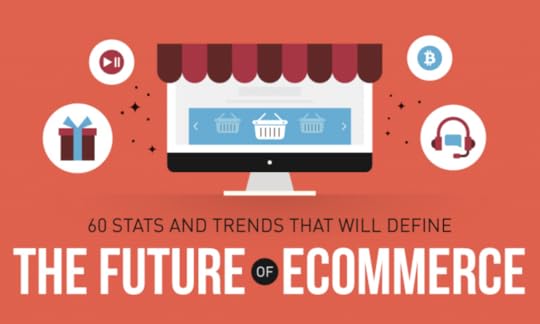
Although amounting to $4.8 billion in sales, worldwide e-commerce sales growth is predicted to steadily decline by roughly one percent year after year until 2021. To survive this future, you must include seamless e-commerce integration. Here are five key things that your business needs to offer to make sure it gains and maintains a competitive advantage, according to research by Subscriptionly.
Optimize Delivery Speed
If you can, offer same day deliveries. Most of your shoppers will buy more if you offered same-day deliveries. Most of your shoppers will also expect same-day deliveries from you if your brand is high end. The importance of same-day shipping is underscored in Subscriptionly’s research that shows 73 percent of buyers are willing to pay $10 for shipping via drone if their packages are guaranteed to be delivered within an hour.
Personalization
Content overload is a problem these days. People don’t want to see content they don’t care about, especially when there’s better, more relevant content vying for their attention. That’s why customers value customization and personalization.
According to Subscriptionly, 41 percent of surveyed customers changed to companies with better personalization, and 48 percent spent more money because of good shop customization, like showing recommended products based on their likes or even the current weather!
Always Mobile First
While numerous shoppers purchase on desktops, more than half of consumers browse using smartphones. In fact, 58 percent of buyers use their mobile devices to research products. Smartphone-based purchases are also forecasted to increase up to 60 percent by 2020. If your e-commerce store isn’t optimized for mobile, the bad UX will likely detract from your sales, likely hurting your SEO.
Provide Multiple Access and Payment Options
Seventy-three percent of consumers shop using multiple channels. Try to at least be present in two social media networks to make it easier for your audience to find and interact with your brand.
Also, alternative payment options like cryptocurrency are predicted to overtake credit cards as the preferred mode of payment. Research now on how to integrate that into your current payment options.
Video Is King
Because people want to see how to use your product or service, showing them in a video builds trust. You can increase your average order value by 68 percent by inserting product videos in most of your page.
There are more ways to ensure you stay competitive in e-commerce. In fact, the aforementioned tips are only a sneak peak. To learn more about thriving in e-commerce, examine the infographic below.

This infographic was provided by Subscriptionly.
The post 5 Things You Need to Do to Thrive in E-commerce appeared first on AdvertiseMint.
August 27, 2018
Snapchat and the Many Connections It Cultivates
 August 27, 2018
August 27, 2018Anna Hubbel
Snapchat and the Many Connections It Cultivates. #snapchat #digitaladvertising #marketing
Click To Tweet Rhone / Unsplash
Rhone / Unsplash
Sometimes, in the midst of elaborate marketing strategies and creative brainstorming, it’s easy to forget social media’s true purpose: connecting people, building relationships, communicating with loved ones. Social media exists to help us stay in touch with others from wherever we are. I am so grateful that social media allows me to communicate with my family amidst the craziness that is my life. In particular, Snapchat has helped bring my immediate family closer together.
While Snapchat is better known for its popularity with Gen Zs, members of my immediate family, who range from my parents to Millennials to Gen Zs, have a group chat on the platform that we use to connect. We send Snaps to each other of silly events that happen at work, at home, or even out and about throughout the day. I can’t tell you how many Snaps I’ve received of the family cat terrorizing the family dog.
Older generations often complain that younger generations spend too much time on their phones, missing real-life relationships. However, platforms like Snapchat bring people closer together through the virtual universe when they can’t physically be at the same place. Snapchat allows families like mine to create and capture memories together no matter where we are or aren’t.
My family isn’t the only one that Snapchat connects. In an article published by The Washington Post in 2017, freelance writer Lauren DePino admits that she began using the app to connect with the teenagers in her family:
“As Snapchat continues to strengthen communication among us, I’m learning that preserving what we’re sharing isn’t the point. It’s the living moment that matters. From my perspective as a 35-year-old, seeing teenage life as it happens cultivates a better overall relationship. These moments show life as it is—genuine, goofy and ephemeral. These teens aren’t striving to depict themselves as perfect because, once shared, the images disappear. No one keeps score of who’s messaging whom. There is no fishing for likes, no room for fake praise. It’s just conversation and connection.”
As DePino eloquently stated, Snapchat helps people connect with one another by capturing genuine and ephemeral moments, the kind of moments that typically occur in real life. Using Snapchat, people can experience the moments for which they can’t be physically present.
Snapchat Also Connects Users with Businesses
 Thomas Young / Unsplash
Thomas Young / UnsplashAlthough Snapchat prioritizes personal relationships, it doesn’t neglect relationships between the users and the businesses that advertises on its platform. Back in April, Snap allowed users to purchase from businesses within Snapchat without leaving the app. This capability not only brings convenience to the user but also helps businesses grow by eliminating friction in the user’s buying journey. Rather than being redirected to a slow-loading, mobile-unfriendly website, users can seamlessly and easily purchase from the app.
Additionally, Snapchat helps businesses increase foot traffic by allowing businesses to show ads to users based on their current location. Using the Location Filters, for example, businesses can show their filters, complete with brand logo, to users who are near their brick-and-mortar stores.
Studies show that Snapchat is an effective tool to connect users with businesses. Last year, users spent more than 130 million hours on Snapchat in the US for back-to-school shopping, one of the two biggest shopping times of the year. In 2017, back-to-school shopping accounted for $27 billion in US sales. Snapchat was a major influencer during that sales boom.
The Family That Snapchats Together Buys Together

When users connect with their families on Snapchat, their conversations have an impact on their purchase decisions. For example, if my sister shares a Snap of her and her boyfriend watching a popular Netflix show, it might spark my interest in paying for a Netflix subscription. Or if my dad says he’s really enjoying his new Google Home, I might consider getting myself a voice assistant for my apartment. Perhaps my mom and I want to meet up for lunch, so we turn to Discover and Snap Map to find something close by.
The idea that families are influential in purchase decisions isn’t new. Snap Inc., parent company of Snapchat, is privy to its users’ behavioral patterns. The company previously revealed in a business blog post that Gen Zs influence $600 billion in household spending on the one hand and seek their parents’ approval to buy something on the other.
Snapchat helps cultivate a network that grows and connects like branches of a family tree. Snapchat connects family members with family members, friends with friends. As those connections grow and strengthen, a branch that connects users to businesses sprouts. The longer users spend on Snapchat, the higher the likelihood that they will stumble upon a sponsored filter or lense that features a business they might be interested in. Snapchat doesn’t value one relationship over the other. It values both and strives to cultivate both.
Written by Anna Hubbel, staff writer at AdvertiseMint, Facebook advertising agency
The post Snapchat and the Many Connections It Cultivates appeared first on AdvertiseMint.
August 24, 2018
Pew Research Center Report Shows Social Media Influences Opinions
 August 24, 2018
August 24, 2018Anna Hubbel
@PewResearchCenter Report Shows Social Media Influences Opinions. #fakenews #socialmedia
Click To Tweet

It may sound ridiculous that a social media post can influence others’ stance on an issue. Believe it or not, it can, according to a recent Pew Research Center report. A recent survey revealed that 14 percent of Americans in the past year have changed their stance on a political or social issue because of social media.
The survey, conducted from May 29 to June 11, found that US adults do, in fact, take information they encounter on social media very seriously. With the #MeToo and #BlackLivesMatter movements, as well as daily presidential tweets about national topics filling up feeds, public opinions are bound to be affected in some way. While most Americans may take these opportunities to counter or support what populates their feeds, Pew Research Center’s findings show some citizens change their minds because of it.
In its findings, Pew Research Center reported that young men in particular have been more likely than other demographics to change their opinions after seeing something on social media. Specifically, in the past year, three-in-ten men in the 18 to 29 age range altered their stance on a political or social issue because of the information they saw on social media. That’s a full 29 percent. In contrast, only 12 percent of men aged 30 and older and 11 percent of women aged 30 and older said the same.
Race and ethnicity was also a factor measured in the study. These are the ethnicities and races of the citizens who said social media affected their views in the past year:
Black: 19 percent
Hispanic: 22 percent
White: 11 percent
Additionally, political party affiliation was an indicator of people’s tendencies to change views. The survey revealed the following about party affiliation in respect to likeliness to change views in response to social media:
Democrats and Democrat-leaning Independents: 17 percent
Men: 21 percent
Women: 14 percent
Republicans and Republican leaners: 9 percent
Men: 9 percent
Women: 9 percent
Clearly, social media is a powerful influencer in matters of political and public opinion.
Social Media and Fake News

Although 14 percent seems like such a minuscule portion of the American population, Pew Research Center discovered that the people who make up that number place significant importance on social media as a political and activist resource. Social media platforms like Facebook and Twitter can indeed be useful tools for healthy debates and conversations to encourage positive change—but they can also influence people’s opinions with fake news
During the 2016 US Presidential Election, Russian troll accounts distributed politically divisive ads to spark controversy and manipulate voters’ views on important topics such as gun control. The accounts that distributed those ads posed as US organizations such as Black Lives Matter, LGBT United, L for Life, Being Patriotic, and Born Liberal, organizations people trust. One particular page, posing under the name Secured Borders, promoted anti-immigration rhetoric, acquiring 133,000 followers.
The proliferation of fake news on social media has the potential to cause crises at the national level. Recognizing social media’s influence on people’s opinions, Facebook is implementing stricter rules for advertisers and publishers who want to use the platform to promote content. In light of the election interference, Facebook deliberated on the meaning of “free expression,” as bad actors use the term as justification to share fake news, spread hate speech, and even incite violence.
Facebook is also increasing transparency for pages and ads. Any advertiser who distributes electoral or “issue” ads (i.e. ads about controversial issues like gun control) must first receive authorization. These ads will be labeled a “Political Ad” to let people know that the ad has a political purpose. Facebook also requires pages with large US audiences to adhere to new authorization requirements before they can continue to post and advertise on the platform.
Written by Anna Hubbel, staff writer at AdvertiseMint, company for Facebook ads
The post Pew Research Center Report Shows Social Media Influences Opinions appeared first on AdvertiseMint.



